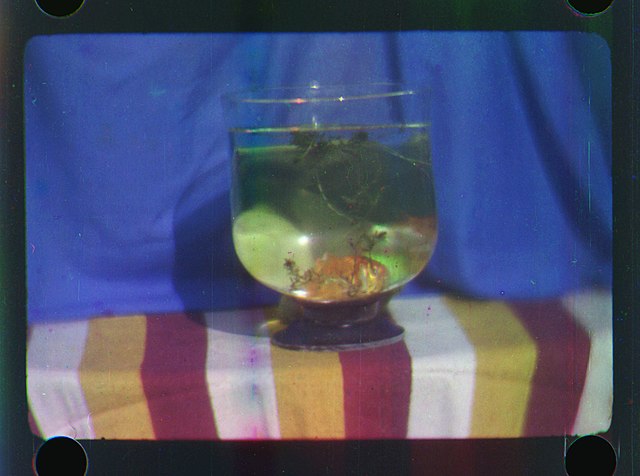Kinemacolor was the first successful colour motion picture process. Used commercially from 1909 to 1915, it was invented by George Albert Smith in 1906. It was a two-colour additive colour process, photographing a black-and-white film behind alternating red/orange and blue/green filters and projecting them through red and green filters. It was demonstrated several times in 1908 and first shown to the public in 1909. From 1909 on, the process was known and trademarked as Kinemacolor and was marketed by Charles Urban’s Natural Color Kinematograph Company, which sold Kinemacolor licences around the world.
A frame from George Albert Smith's early colour film ''Two Clowns'' (c. 1907)
Frame from the Kinemacolor film Balkan War Scenes (1912), filmed by James Scott Brown and Frederic Villiers during the First Balkan War.
Color motion picture film
Color motion picture film refers both to unexposed color photographic film in a format suitable for use in a motion picture camera, and to finished motion picture film, ready for use in a projector, which bears images in color.
Still from test film made by Edward Turner in 1902
A strip of undeveloped 35 mm color negative.
A representation of the layers within a piece of developed color 35 mm negative film. When developed, the dye couplers in the blue-, green-, and red-sensitive layers turn the exposed silver halide crystals to their complementary colors (yellow, magenta, and cyan). The film is made up of (A) Clear protective topcoat, (B) UV filter, (C) "Fast" blue layer, (D) "Slow" blue layer, (E) Yellow filter to cut all blue light from passing through to (F) "Fast" green layer, (G) "Slow" green layer, (H) Inter (subbing) layer, (I) "Fast" red layer, (J) "Slow" red layer, (K) Clear triacetate base, and (L) Antihalation (rem-jet) backing.





